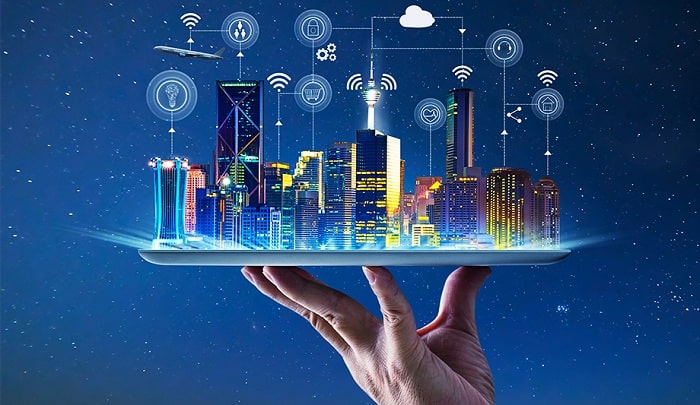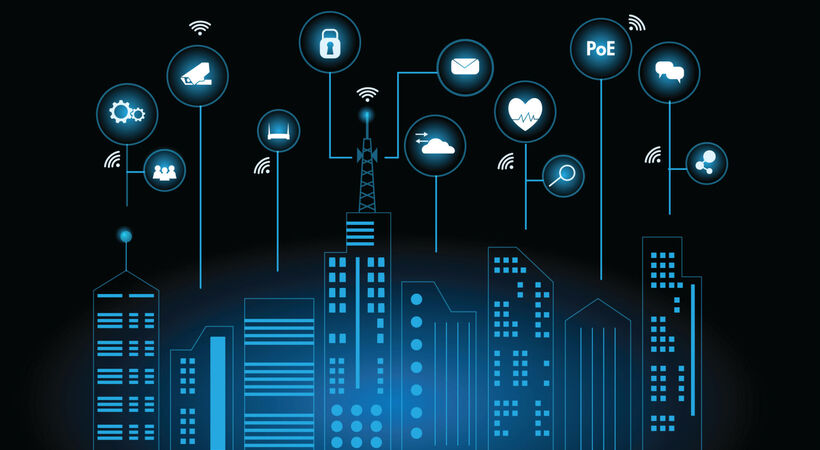Do you know about Intelligent buildings? When it comes to internal systems and building utilization, typical buildings are widely recognized for their inefficiency and expense. This can then spread to the businesses and organizations inside, causing less work to get done and less efficiency.
Smart buildings solve these problems by integrating technology and the Internet of Things (IoT) into the building’s key internal systems and workings. This makes sure that everything from the central heating system to the lighting, the security system to the access control system, is connected, talking to each other, and working together.
What are Intelligent Buildings?
Connected networks of sensors and actuators make up intelligent buildings. Traditional building management systems, such as those that regulate lighting and HVAC systems, combine with these to continuously enhance and automate the building’s numerous activities. Sensor networks can be used to share almost an infinite amount of information, like the number of people in a room, the quality of the air inside, and much more.
The real smarts, though, come from using that data to automate processes and systems. This automation may lead to a number of benefits, such as less energy use and a more comfortable workplace.Building automation systems can improve operational efficiency, reduce costs, and reduce the environmental impact. They can also improve employee satisfaction, which adds value by increasing productivity and retention.
In order to be as cost-effective and productive as possible, intelligent buildings maximize four basic elements.
These are the factors:
- Management
- The framework
- Professional services
- Techniques
What sets these Intelligent buildings apart is how well they manage and regulate resources, as well as how well they use and administrate them. These buildings have real-time data collection points that collect data such as occupancy levels, temperature, humidity, and other factors in order to make the building as efficient as possible. Big data, networking, and new detection skills are all part of a smart building’s architecture.
The benefits of intelligent buildings
Let’s look at some of the real-world benefits of intelligent buildings technology and how they might help you meet other goals.
1. Better Facility Management
Smart buildings are designed to save money quickly and easily by making better use of energy. This will help your business a lot because, compared to regular buildings, the building will be able to work and stand for longer periods of time.Also, so much more data would be available, which would make it easier to run the facility.
2. Excellent Facility Management
As a result, IT and facilities management would be considerably improved and optimized as a result of accurate integrated systems. By integrating, the operating system of the building would be streamlined, which would make the job of your IT staff much easier. They would not have to deal with numerous independent systems. There would be a single central control, which would greatly improve building management efficiency. Your staff will not have to constantly check multiple computers and systems to keep track of the network, HVAC, and other systems.
3. Lower Overhead
Then, with the intelligent buildings, you’d save a lot of money on overhead. You’ll also find that your power bill will be reduced, and you’ll save more money than you did previously. This is because automated systems would lower the cost of maintaining the structure. Because the building will last longer, you will be able to spend less on operating costs over time.
4. Higher Occupant Satisfaction
The benefit of intelligent buildings is that they will provide improved air flow, heating, lighting, sanitation, and even security. The passengers’ comfort would naturally improve as a result of this. This will increase employee retention since your staff will like working there every day because of the high degree of comfort.
5. Additional Earnings
When you have Intelligent buildings, you naturally have more opportunities for greater money since you have more real estate to lease. Small businesses and startups would be interested in working in this smart building because they know all of the benefits of doing so.You could offer potential renters things like network security, more control over their area, integrated communications, more security, and so on.
6. Better Customer Service
If you have clients who need to come to your office, putting your business in an intelligent building will improve your customer service and overall experience significantly. They would have the same amenities and benefits as the other people who work or live in the building. This implies they’ll have more security in the lounge, parking lot, and elevators. Also, thanks to smart phone systems that work together and personalised interactions, the way your customers and workers talk to each other would be much better.
7. Do away with manual maintenance processes
Manual maintenance has passed its expiration date. By using smart, automated technologies, you can take care of the parts of your building that need maintenance. This will give your team more time to work on tasks that require human interaction. This saves time as well as money. Our smart solutions in London saved a theatre 2,000 labour hours over the course of a year.
8. Efficient buildings are most cost effective
Smart solutions are intended to save you money in the long run. You’ll save money if your building is more efficient, your employees are happier and more productive, and you’re not spending time and effort on manual operations and upkeep. Our solutions saved a supermarket $1.6 million per year on HVAC expenditures alone.
9. Reduce Your Energy Consumption
Reduced energy usage, perhaps one of the most important benefits of smart buildings, will not only help your business in terms of lower expenses and a carbon footprint, but it will also have a great influence on the environment. Energy consumption may be managed and automated by section in a smart building, ensuring that no component of the building is heated, cooled, or illuminated while it is not in use, addressing the issue of wasteful energy usage and unsustainable practises in traditional buildings.
10. Predictive Maintenance
Any piece of equipment or system needs to be taken care of to make sure it works at its best and stays efficient, reducing the need for expensive replacements. Intelligent buildings could use data from each connected system and its sensors to predict when each piece of equipment will need to be fixed, making sure that nothing is missed or ignored. Using BusinessWatch, we can also find any problems inside the building and fix them remotely if we can. This saves you the cost of having an engineer come out.
11. Automation – Intelligent Buildings
When all systems and pieces of equipment are fully integrated and can talk to each other, automation is possible.Smart buildings have the ability to use unique automation, which not only makes them more efficient but may also make tenants safer in case of an emergency.For example, if the security system detected a break-in outside of business hours, lights could be turned on in that area, access control could be turned off, and emergency services could be called – all automatically and without the help of a person.
12. Improved Security
Intelligent buildings may substantially boost the efficacy of a security system by allowing the use of different smart security features and equipment to monitor, control, and safeguard the building, such as smart door locks, alarms, and cameras, among other things. When used in a smart building, the benefits include integration with all other systems, the ability to automate operations in case of a problem, and the ability to help deliver important building data.
What is the difference between intelligent buildings and smart buildings?
Some people use the terms “smart buildings” and “intelligent buildings” interchangeably, but there is a difference. Smart buildings use smart sensors like the ones we talked about above to collect data about specific, isolated buildings. They also put all of this information into intelligent portals or dashboards. In other words, smart buildings are made up of a group of smart processes that work together to give a full picture.
Intelligent buildings vs. traditional buildings management systems
Data is generated by all of the equipment and sensors in a workplace. From air conditioning to printers, boilers to occupancy monitors, there’s something for everyone. Even though a typical building management system can connect to, monitor, and control all of these systems on its own, it is limited by the settings made by the building manager. A standard building management system that is set up with certain times, concentrations, and temperatures and alarms that go off if the system deviates from the parameters that were set is not very smart.
Let’s say you’ve set up your HVAC system to keep the office at a constant, comfortable temperature.Now, one of the units may be out of sync by a single degree. As a result, it would not be noticed by the BMS’s control settings.
However, that one degree might result in immeasurable quantities of lost energy over time. This is where accurate analytics and machine learning made possible by AI come into play. These are the essential foundations of an intelligent structure. They may also bring in something, or rather someone, very significant through the use of third-party technology: the user.





